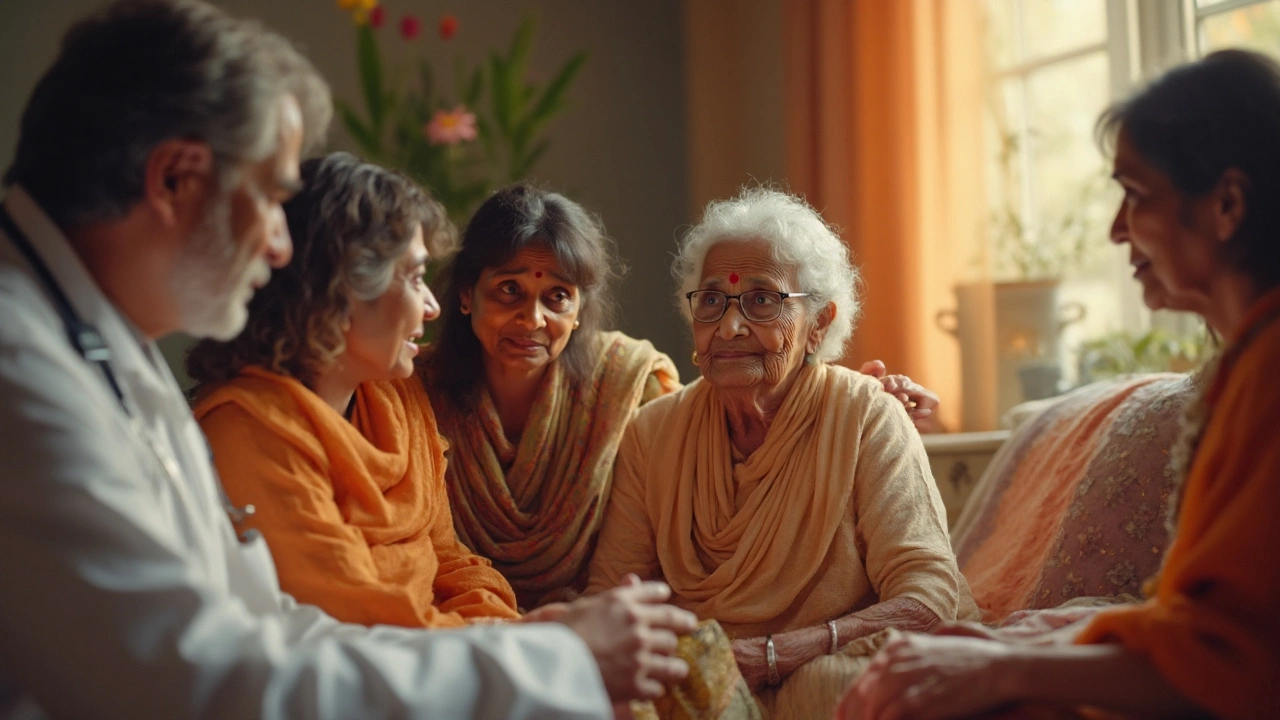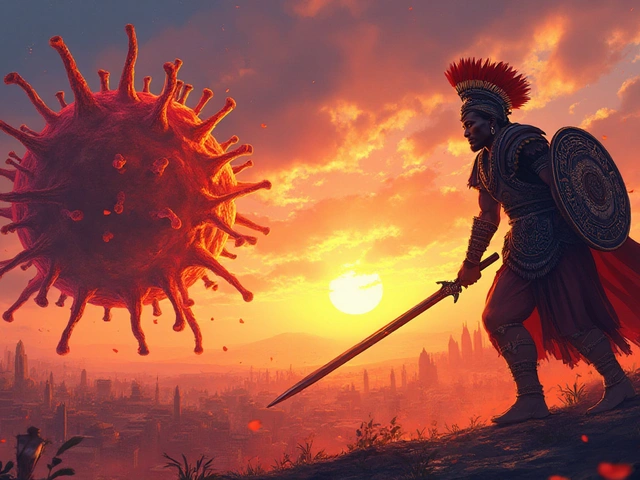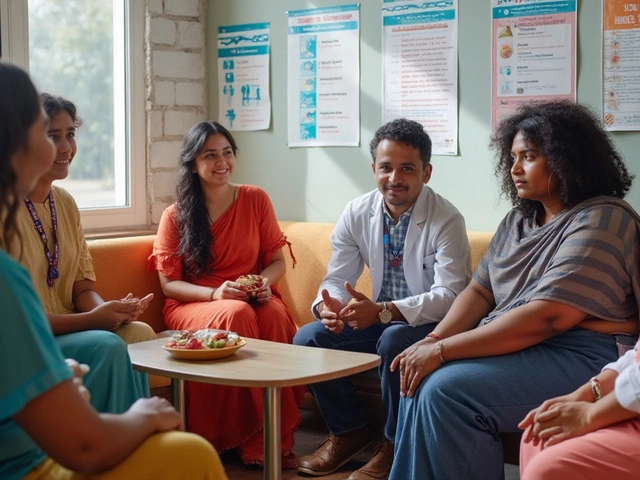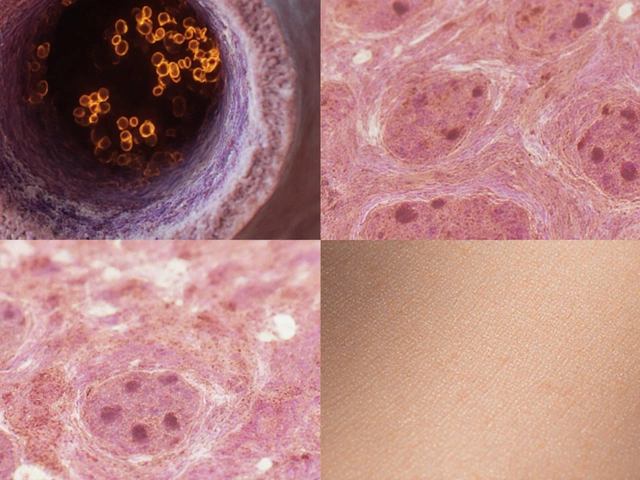The words you never want to hear from a doctor? Late stage cancer. It’s the moment when medical science meets its limits, and suddenly, statistics matter more than anything else. Behind every cold number on a chart, there’s a real person, a family, and a rollercoaster of emotions. If cancer feels like a lottery you never signed up for, knowing which types are most dangerous is more than morbid curiosity—it can be a fight for your life.
Why Some Cancers Have Poor Survival Rates
Let’s get one thing straight: not all cancers are equal. Some grow slowly and wave their warning flags early, while others hide in the shadows, making noise only when they're almost impossible to treat. The big reason some cancers have poor survival rates is that they’re sneaky. Pancreatic, liver, brain, and some lung cancers stay silent until it’s too late for a knockout punch. They’re masters at blending in. By the time symptoms show up, the cancer often has travel plans—already spreading to other organs.
Another factor is biology. Some cancers have aggressive cell types that double, triple, and quadruple in record time. Their makeup makes them resistant to common treatments. For instance, pancreatic cancer has a thick, protective layer around tumor cells, a bit like armor, blocking out both immune attacks and chemotherapy drugs. That’s why even the best doctors, with all their arsenal, sometimes can’t win.
There’s also the issue of organs you can’t live without. Liver, pancreas, and lungs are essential, so tumors here quickly tamper with body functions. And even a small tumor, say in the brain, can disrupt critical areas needed for breathing, moving, or talking. It’s not about the size; it’s about the neighborhood.
On top of this, factors like age, general health, and access to care play a role. In countries where cancer screening isn’t a norm, or hospitals are miles away, even treatable cancers become deadly. And we can’t ignore the role of stigma—cancers that people keep secret, out of shame or fear, end up found too late.
Types of Cancer With the Poorest Survival
If you’re curious about which cancers pack the biggest punch, the numbers don’t mince words. Pancreatic cancer leads the list, with a 5-year survival rate stubbornly stuck in the single digits—hovering around 10%. That’s the kind of stat you can’t ignore. Survival rates drop off so sharply because symptoms like jaundice or back pain often mean it’s already at an advanced stage.
Liver cancer is right there in the danger zone. People living with chronic hepatitis B or C, or those with a history of alcohol abuse, are especially at risk. The five-year survival is usually under 20%. Most people find out only when the cancer’s already spread.
Small cell lung cancer also ranks high among the worst offenders. It tends to spread from the lungs early on. Even with aggressive treatment, only 7-10% of patients beat the five-year mark, and that’s being optimistic. Non-small cell lung cancer fares a bit better, but late detection still ruins the odds.
Brain cancers, especially glioblastoma, are notorious. Here’s where numbers hit hard: median survival is about 15 months, even with surgery and chemoradiation. The tumor’s in your control center, and even the best neurosurgeons can’t scoop out every last cell.
Esophageal cancer isn’t as rare as you might think, and it doesn’t give much warning. When trouble swallowing or chest pain arrives, it often means the cancer has grown big. The 5-year survival is around 20% at best, with certain types like adenocarcinoma leading the gloom.
Ovarian cancer is sneaky, too. Despite modern scans and blood tests, two out of three women are diagnosed at an advanced stage. The 5-year success rate hangs at roughly 45%, but drops much lower when spread is substantial. Ovarian cancer’s vague symptoms—bloating, mild cramps, or feeling full—could easily get brushed off, which is why it waits until the late innings to show itself.
Here are some quick numbers to put these dangers into perspective:
| Cancer Type | 5-Year Survival Rate (%) |
|---|---|
| Pancreatic | 10 |
| Liver | 18 |
| Small Cell Lung | 7-10 |
| Glioblastoma (Brain) | 5-7 |
| Esophageal | 20 |
| Ovarian | 47 |
| Stomach | 32 |
| Gallbladder | 19 |

Why Early Detection Rarely Happens
You might wonder, if these cancers are so deadly, why aren’t we catching them sooner? The problem is, most of them don’t shout for attention. Instead, they whisper, and we’re not always listening. Pancreatic cancer, for example, often starts with nothing more than mild back ache, subtle digestive trouble, or some weight loss. By the time something feels seriously off, the disease may have already taken hold.
Liver cancer is another silent type. Unless you get regular scans for other liver issues or hepatitis, you won’t know there’s anything wrong until the liver starts failing. Even when yellowing of the skin (jaundice), swelling, or pain shows up, it's usually late game. Many people living with hepatitis B or C, or with fatty liver, miss regular screenings, so their first clue comes at the point where options are limited.
Lung cancer has its own sneaky tactics. In India and around the world, smokers don’t always get routine scans, and coughing is often ignored. By the time stubborn cough, blood in mucus, or unexplained weight loss kick in, the cancer might already be at stage 3 or 4.
Symptoms of brain cancer often look like normal health hiccups—headaches, clumsiness, or mood changes—until pressure builds up dangerously. A person might put these down to stress or aging, unaware that time is ticking away fast.
Now, why don’t we screen everyone aggressively? The science isn’t there yet. Scans like CT or MRI are expensive, and blood markers for these cancers aren’t reliable. The risk of false alarms and unnecessary treatments is high. In a country like India, where hospital resources already strain under pressure, it becomes a game of prioritizing resources.
Sometimes, awareness is the only weapon. For certain risk groups—like heavy drinkers, or those with chronic hepatitis, family history, or genetic mutations—regular follow-ups can tip the balance. For instance, a person who knows they carry a BRCA gene for ovarian or breast cancer might seek regular ultrasounds or CA-125 blood tests, staying a step ahead.
Hope on the Horizon: What Science and Doctors Are Doing
This all sounds grim, but don’t toss in the towel. Cancer research is moving like never before, with clever scientists in labs across India and the world piecing together solutions nobody dreamed of 10 years ago. For example, immunotherapies—treatments that wake up the body's own immune system—are showing big promise for tough cancers like lung or liver. They’re not miracle cures, but for some, they extend life and even force cancers into a long remission.
In pancreatic cancer, researchers are testing drugs to crack open those protective tumor shields, allowing treatments to strike deeper. Liquid biopsy, which involves analyzing a blood sample for cancer DNA, could help in early detection when no symptoms are obvious. These tests are still finding their way into regular hospitals, but the future looks bright.
Smart use of artificial intelligence is another game-changer. AI-assisted scans can spot subtle warning signs radiologists might miss. In August 2023, a Mumbai hospital piloted AI software to sort lung X-rays, flagging abnormalities in minutes instead of days—a move that could make a huge difference in places with backlogged radiology.
Community outreach matters, too. Health camps and mobile clinics across rural India are raising awareness about risky symptoms. Free hepatitis vaccines, anti-smoking drives, and teaching people not to ignore odd lumps or sudden weight loss are shifting the tide for thousands. Some metro cities, like Delhi or Bengaluru, have launched free screening programs, especially for women at risk of cervical or breast cancer, but the same model is pushing toward other cancers with poor outcomes.
The survival odds may still look rough, but every extra year matters for families and patients. Even a six-month head start can mean the difference between aggressive treatment and palliative care.

What You Can Do: Tips for Staying Alert and Lowering Risk
So what next? Knowledge is power, but action is what saves lives. If you’re in a group that’s got higher risks—say, a family history of cancer, a habit of smoking or heavy drinking, or ongoing hepatitis—you can get proactive. Don’t wait for big symptoms. Bring up your worries during your yearly doctor visit. Even a basic ultrasound or liver enzyme test can catch warning signs early.
Watch out for signals your body isn’t right, and don’t brush them off: unexplained weight loss, tiredness, yellowing skin, odd lumps, change in stool or urine color, nagging abdominal pain, trouble swallowing, or severe headaches. None of these automatically mean cancer, but it’s always worth a closer look.
Eat smart and move often. Diets high in fiber (think of fruits, vegetables, whole grains) and less processed meat help lower cancer risks. Keep an eye on your alcohol use. Even a couple drinks a week, over years, chip away at your liver’s health. I’ve learned it the hard way after seeing relatives go through the wringer.
Vaccines aren’t just for kids. Ask your doctor about hepatitis B vaccine—it’s free in most public hospitals. If you’re a smoker, or live with one, now’s a fantastic time to quit. Every year without tobacco is a win.
- Ask about cancer screening programs in your area—especially if you’ve got a family risk.
- Join support groups. Both online and local groups can alert you to warning signs or new tests.
- Share your health story openly, so stigma loses power. Secrecy helps cancer, not people.
If you notice any strange symptoms, even if you don’t have a known risk, trust your gut. I once caught a health scare just by following up when my appetite vanished—and it wasn’t cancer, but it taught me not to ignore these signals.
Spotlighting which cancers with poor survival gives you a fighting edge. It’s not just about knowing the stats; it’s about being ready to respond. As someone watching Simba, my cat, claw his way through a stubborn cold last winter, I get it—being alert, acting fast, and getting the right help can change how any battle ends.



